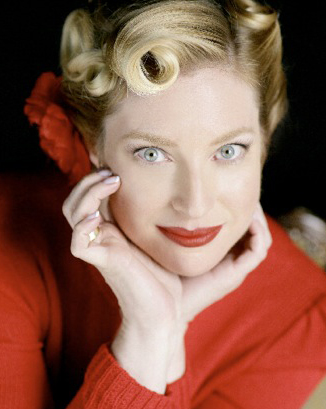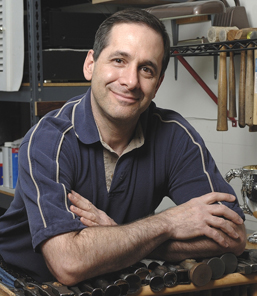
The Modern Butlers’ Journal volume 13, issue 1
International Institute of Modern Butlers
Teaching Right Mindset, People Skills, & Superior-service Expertise
Message from the Chairman
Another New Year! A time for resolutions that are generally dropped before the end of January or the first quarter, according to various studies, with only 8% of people actually seeing their resolutions through to the end of the year. Reasons given by pundits tend to be that the resolutions are unrealistic/too lofty , they butt into entrenched habits that are hard to break, they are crowded out by a busy schedule, etc.
These may well be true, but I have a different take. If we look at the definition of “resolution,” it means “a firm decision to do or not do something.” Right away, we can see that no decision to do something can stand on its own: One has to program the needed steps, where and when they will be done in the existing schedule, and so support the decision and stand some chance of success.
Further, though, the derivation of “resolution” means “to release or loosen,” and the derivation of the root word, “resolve,” refers to “solving a problem.”
Yes? Why is this relevant?
Well, unusual as it may seem, the best way to solve a problem is not to work hard at solving it, which just reinforces the problem, but simply to confront the problem fully. One will usually find that there are elements of the problem that one is avoiding looking at, which of course, makes it hard to “solve.” There are numerous examples of this in life and history. Take bacteria: they are a problem that was “solved” 90 years ago by antibiotics. Now bacteria are still a problem, but so are antibiotics—many of them no longer working for various reasons. So now the challenge is to “solve” the problem of antibiotics not working. And so it goes. The solution inevitably becomes the problem.
Here’s another one. A person cannot confront something in life, say spouse trouble, work trouble, exams, and so they take to alcohol or drugs. That solution quickly becomes the new, additional problem.
So if there are things you would like to improve in the year ahead, instead of deciding what the solution might be to some problem, you might meet with more success if you sat down and took a very good look at the “problem” (not just introverting and thinking about it ad nauseam) and examined its various aspects.
Doing this would put you more at cause over the subject, and you would start to see things that you had missed before. For instance, if having trouble with exams, you might examine your study habits and discover that you spent more time texting, partying, and daydreaming than studying. And the simple decision to study during class time and complete all study assignments before partying, would result in a doable series of steps that would bring about good exam results, so that the “problem” of passing exams was not a problem anymore, and you simply passed them because you knew the materials.
We wish thou success in the year ahead, whether or not it include “New Year Resolutions.”
Butlers in the Media
If some amongst us may occasionally think their position to be abusive, then it would be worth considering the story of a recently deposed dictator’s butler, to put matters in perspective.
It would be interesting to tally exactly how many items of furniture and other products have been identified by the “butler”moniker: added to the list this month are: a butler door/swinging butler door (meaning the standard door [in any kitchen-going-into-a-dining-room environment] without a handle that swings both ways, rather than having a handle and lock and swinging just one way); A Mini Butler saddle bag is also now available—although the gratuitous insertion of “butler” into the name makes it sound like a small butler’s saddle bag. Maybe they will come out next with a saddle bag for a larger butler?
Then we have living entities that are given the title of butler, including a poodle that is presented as a butler by a British advertising agency; and a Bag Butler in Ireland, who takes the reported “torture” out of Christmas shopping by “holding doors, carrying bags, standing in queues, massaging sore feet, and even singing a festive tune or two.” And in Manchester, England, we have the inevitable Buff Butler. What on earth is going on in the British Isles? Mr. Carson?
An interesting interview of the Chairman in a blog hosted by two creative resort branders and marketers hailing from Southern Tyrol, after we met on a project in the Maldives.
When it comes to robot butlers, the Faking News site has an interesting take in its article, Zuckerberg’s AI butler Jarvis to be scrapped after he was found wasting time on Facebook instead of doing household chores
 Creative Corner
Creative Corner
Soap Carving Techniques, Part 2
by Kobi Gutman
We will now complete the soap swan shown in the December issue of the MBJ.
8) Once the swan has been carved, shape the beak so it is narrower at the end—rounded rather than pointed sharply.
 9) Round the neck, chest, head and beak parts by using the Thai knife in the same way one spreads butter on bread. Simply slant the knife against the soap and slide it over its surface. Do this on all the corners to create round and smooth surfaces.
9) Round the neck, chest, head and beak parts by using the Thai knife in the same way one spreads butter on bread. Simply slant the knife against the soap and slide it over its surface. Do this on all the corners to create round and smooth surfaces.
 10) Depending on how you’d like to have the body look, you can use the same “buttering” technique to smoothen it. I chose here to give it a crystal-like look. This was achieved by slicing the soap using a paring knife. Continue to refine the body this way until you achieve its final shape.
10) Depending on how you’d like to have the body look, you can use the same “buttering” technique to smoothen it. I chose here to give it a crystal-like look. This was achieved by slicing the soap using a paring knife. Continue to refine the body this way until you achieve its final shape.

11) For a nice finish, apply some glitter by dipping a brush in glitter and tapping it against the soap; the glitter will stick. If glitter lands on the wrong parts of the soap, simply scrape it off gently using the Thai knife. On the beak, I applied red glitter only on one side (seen in the photo on the far side of the swan’s beak).
Adding the glitter, of course, makes the swan unusable as a soap, but very usable as an art piece.
Mr. Kobi Gutman is the Head Butler at the Fort Harrison Retreat in Florida. He can be contacted via the Institute: enquiries @ modernbutlers.com
Letters to the Editor
I’m an older gentleman—well, 49 years old—with no experience as a butler but considering becoming one. Would your book help me find a butler position? JSR
Ed: First of all, let me address this “older gentleman, 49 years” Wow! You have your whole life ahead of you for some lucky employer. Your age, in other words, is not an impediment to finding a position in this profession, unless you consider it to be so.
As for whether an employer will hire you based on reading the book, or other books—I am afraid not, under normal circumstances. If they are a friend and want to give you a job, then it is possible. A lot depends on your resume, too, what background you have, whether someone would hire you as a butler. If the entire resume is about your ability to use a backhoe, then there is no real crossover. If you have worked in some service industry, such as airline steward or hotel manager, then there is definite relevance.
You obviously would like to work as a butler, and so I would recommend reading the book as a first step, to see if you still feel it would be a good fit as a profession for you.
If so, then I would recommend doing our online private-service butler course ($2,500, about 400 hours work), or a course at a bricks-and-mortar school (usually $8,000-16,000 and about 200-300 hours of work).
None of these would guarantee a job, but your resume would be heading in the right direction, and your knowledge, skills, and small experience would be sufficient for some employers to feel you would be a worthwhile investment or risk. And you could work your way up to full-fledged butler by working in junior roles if needed, so that more employers would look upon you as a safe bet.

Let’s Talk about Mixology, Part 18
Driver’s Punch
by Amer Vargas
I hope you have enjoyed the holiday season with your loved ones and in the best of company. Since the holidays are too often a period of excess, the cocktail for this month is on the healthier side for being non-alcoholic. This is an “anyone and anytime” drink and, as one can ascertain by its name, is the perfect choice for designated drivers during celebrations. Thanks to Jo Pratt of BBC’s bbcgoodfood.com for the invention of this tangy mocktail.
The preparation of this virgin drink is very simple:
For a big pitcher (serving eight) of Driver’s Punch, the ingredients are:
- 100 gr. of frozen cranberries (or freeze fresh ones in a covered container)
- 100 ml/3 ½ oz of cranberry juice
- 500 ml/17 ½ oz of blood orange juice
- The juice of a lime
- Lime and orange wedges
- Some mint sprigs
- 600 ml/21 oz of sparkling apple juice
Mix the cranberry, blood orange and lime juices. Smash 1/8th of the frozen cranberries in the bottom of a highball glass and add a wedge of lime, a wedge of orange and a sprig of mint. Fill ¾ of the glass with the juice mix and top it off with the apple juice.
Stir gently and enjoy!
Mr. Vargas is the Institute’s President and can be contacted via AmerVargas @ modernbutlers.com

Of Butlers & Floral Arrangements
Cooking with Lavender Part 2 of 2
by GJ dePillis, Master Gardener
For an English Afternoon Tea (often mistakenly referred to as “High Tea”), freshly baked scones are usually much appreciated by family and guests. Try a unique lavender recipe for a change.
- 1 tablespoon dried culinary Provence lavender buds
- 1 1/3 cup heavy cream
- 2 ¼ cup all purpose flour
- 1 tablespoon sugar
- 1 teaspoon baking powder
- ¼ teaspoon baking soda
- ¼ pound (1 stick) of cold, unsalted butter cut into ¼ inch slices
- Lavender sugar
<http://www.modernbutlers.com/wp-content/uploads/2017/01/Lavender-Scone.jpg”> Steps:
Steps:
- Mix the lavender and 1 cup of cream into a saucepan and bring almost to a boil. Remove from heat and cool, then refrigerate for about 2 hours. Strain the cream and discard the lavender buds.
- Preheat oven to 375 F
- Line baking dish with parchment paper (or grease the baking dish)
- Mix in a food processor: flour, sugar, baking powder, baking soda, butter. Pulse the food processor and add the lavender cream. Stop the machine when it forms a smooth dough.
- Roll the dough onto a floured surface (roll ½-inch thick if making 64 small, 1½ inch wide scones, or roll just under 1 inch thick if making 18 large 3-inch wide scones). Note: If combining the dough scraps and re-rolling and re-cutting, only do so once.
- Keep the dough circles 1-inch apart on the baking sheet. Take the remaining 1/3 of cream and brush the tops for a glazed finish. Sprinkle with lavender sugar.
- Bake for 12-to-15 minutes until golden brown on top and puffy.
Formal tea and scones are best served with Devonshire cream, but when not available, serve with a thick, tangy Crème Fraiche. Here is a recipe for Lavender Crème Fraiche.
- 1 cup heavy cream
- 2 tablespoons buttermilk
- 1 teaspoon dried culinary Provence lavender buds, finely ground
Steps:
- Mix cream and buttermilk in a glass bowl and cover. Let it stand at room temperature (around 70F) for 8 to 24 hours.
- The consistency should be very thick.
- Stir in lavender and refrigerate overnight. This can be stored in the refrigerator for up to 10 days .
Serve the scones with strawberry, raspberry-lavender jams or lemon curd and freshly made Crème Fraiche.



Mr. Herman continues to offer his services to our readers for any questions you may have about the care of silver. Either call him at (800) 339-0417 (USA) or email jeff AT hermansilver.com
The Institute is dedicated to raising service standards by broadly disseminating the mindset and superior service expertise of that time-honored, quintessential service provider, the British Butler, updated with modern people skills, and adapted to the needs of modern employers and guests in staffed homes, luxury hotels, resorts, spas, retirement communities, jets, yachts & cruise ships around the world.



